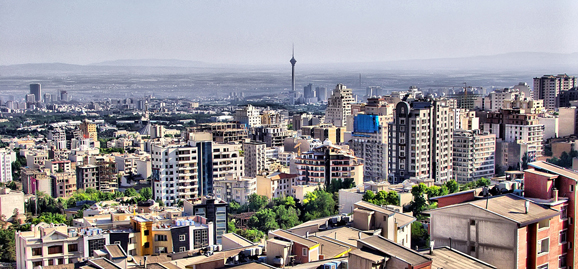Three Paths toward a Nuclear Deal with Iran

It’s easy to miss amid the escalation of sanctions and nuclear bravado, but EU foreign policy chief Catherine Ashton and Tehran’s lead negotiator Saeed Jalili will meet on May 15 in Istanbul to follow up on last months talks between the P5+1 and Iran.
The last round of multilateral talks ended inconclusively, and it has taken a little over a month to get even a one-on-one meeting on the calendar. While no date has been set for a new round of talks with representatives from all seven countries at the table, the upcoming meeting between Ashton and Jalili provides an opportunity to begin planning for how to make negotiations more productive than previous attempts.
Getting on a road more promising than the current intermittent exchanges will require a few key steps:
1) Balance the offer sheet.
The Obama administration and its P5+1 allies deserve credit. They (and to be fair, Iran) refused to budge from maximalist positions throughout 2012, but wisely put the ball in Tehran’s court by offering modest, temporary sanctions relief in return for verifiable limitations to Iran’s nuclear program. This is an important first step, and it’s now Iran’s turn to budge – but the current offer on the table does not provide the makings of a deal that Tehran can sell at home. And if Tehran can’t sell the deal to its various domestic political stakeholders, then we’re back at square one. The same principle holds true in Washington. Balancing the offer sheet through a step-by-step process based on reciprocity provides the greatest chance of building a lasting give-and-take that can survive the contentious domestic politics in both capitals. If this means we have to offer more in order to get more, we should invest the requisite political capital to do so.
2) Broaden the discussion.
Iran is critical to solutions for seven U.S. national security challenges: non-proliferation, energy security, Syria, Afghanistan, Iraq, counter-terrorism, and Israeli-Palestinian peace. America’s status quo position vis-à-vis Iran exacerbates all seven of these challenges. Despite this, the Obama administration has long shunned talks (never mind actual negotiations) with Iran on any issue outside the realm of non-proliferation – but it didn’t always used to be this way. The first round of negotiations in 2009 focused on Iran’s nuclear program, but sideline discussions took place on issues beyond the core focus. Not coincidentally, it is the closest that the two sides have come to a successful agreement during Obama’s presidency. The P5+1 and Iran need to be talking at that level again, and the increasingly deteriorating human rights situations in both Syria and Iran – though different in scope and scale – provide unique opportunities. In preparation for the next multi-party talks, Ashton should convey to Jalili that the P5+1 is prepared to discuss areas of mutual concern on Syria and human rights in Iran. If the next round of talks – or any future talks – are limited only to Iran’s nuclear program, they will likely fail.
3) Start with the end in mind.
Over the duration of the Obama administration, America’s preference has been to work towards small confidence-building measures – without clarifying its long-term objectives vis-à-vis Iran. This is better than nothing, but due to the lack of trust between Washington and Tehran, small tactical steps are unlikely to work – and to date, they have not worked. That is why the Obama administration, together with its P5+1 allies, should decide on an end game – its detailed vision for normal relations with Iran – and then clearly communicate this to Tehran. What is the goal of sanctions, cyber warfare, secret assassination, and other forms of pressure? This is rarely addressed, and it illustrates the wisdom that if you don’t know where you’re going, any road will get you there. Unless Washington and Tehran can see the same light at the end of the tunnel, the reluctance to take risks for peace will likely remain, and both sides will instead continue escalating the conflict towards a military confrontation that both sides would independently seek to avoid.
Reza Marashi is the Research Director for the National Iranian American Council (NIAC). Reza served in the U.S. Department of State for four years in the Office of Iranian Affairs, and his articles have appeared in publications including The New York Times, Foreign Policy, The Atlantic, and The National Interest. He is a contributor to CNN, NPR, and the BBC, among others. Recently, Reza co-authored, with and Trita Parsi, a report titled "Never Give In and Never Give Up” [pdf] that looks at the impact of sanctions on Tehran’s nuclear calculus and identifies the factors that have enabled the Iranian government to sustain its policy, despite mounting economic pressure. Please note that the opinions expressed in this article are attributed to the author and do not necessarily reflect the position of Ploughshares Fund.




